Nowadays, there are countless types of flours in stores from all kinds of plants - millet, rye, wheat, whole grain, nettle flour, oat flour, chickpea, coconut, carob and many others.
In this article, we will first look at how flour is made, we will also list which flours are gluten-free, and we will compare which ones have what nutritional value in order to find out which flours are most healthy, which is our goal.
Our first task is to describe how the flour itself is made, in order to explain what the most healthy flours are.
Making flour - technological process
Before you buy flour from the store, it goes through various technological processes and "walks" a long way until it reaches the store shelves and, accordingly, to our homes. In general, the processing process is not particularly difficult, but the production of flour itself requires a lot of patience and precision. The first stage of making flour is that of gathering the grains or fruits from which the flour will be made. This stage consists of several phases:
First, they must be collected, then sorted, then cleaned if there are any unwanted impurities, and only then are they prepared for the further process.
After these processes, the grains or fruits are crushed and grinded until they turn into a white powder. In this last stage, the consistency of the flour is chosen, which is why it is then divided into fine, semi-coarse and coarse.
Types of flour according to their use
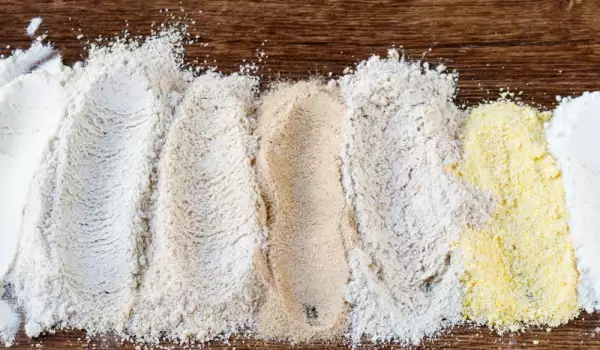
Flours are divided into the following types:
- Fine flour - this flour can be used for pancakes, strudels, pastries or to thicken soups;
- Semi-coarse flour - This flour can be used for sourdough and sponge cake dough;
- Coarse flour - This flour is used for dumplings, macaroni, noodles;
- Baker's flour - This flour has a very fine and soft consistency, which is suitable for baking soft loaves;
- Bread flour - This type of flour, as the name suggests, is suitable for baking bread or leavening;
- Pasta flour - This is hard wheat flour so that the pasta can maintain its shape and density.
Difference between different types of flour
As we said earlier, all kinds of flour can be found in stores. From what we all know - wheat, then to tapioca flour. Let's look at some types of flour, the differences between them and what they are good for:
1. Wheat flour
First of all, wheat flour - as we know, wheat is the most famous cereal from which flour is made. An interesting fact is that in the past, wheat flour was a gift only for the rich, the poor did not have the right to use it. Nowadays, many people do not consume wheat flour or wheat, but they do not know what benefits it has for our health. In general, wheat contains many important nutrients. It is also a source of a lot of fiber. As we know, fiber intake is extremely important for our health. Wheat also contains many vitamins such as B1, B3, B5, riboflavin and folates. It is also rich in iron, calcium and protein.
2. Spelt flour
In second place, but not in importance, is spelt flour. This flour is much more expensive than ordinary flour, but on the other hand it is extremely useful and healthy. Spelt flour does not contain any chemicals, is easily absorbed by the body and has a pleasant nutty flavor. It is important to say that spelt is considered a type of wheat. Spelt flour contains the same nutrients as wheat. Unlike wheat grains, spelt grains are more soluble in water, which makes it extremely easy for our bodies to digest them.
There is a large amount of protein in the spelt, thanks to which the spelt is rich in amino acids. Spelt flour also contains fats, which contain a large amount of unsaturated fatty acids. Spelt flour is extremely rich in fiber and useful substances. Basically, spelt is made up mostly of sugars, which are mostly starches, which gives the things you cook with it a richer flavor and makes them more delicate. Spelt flour, thanks to its large amount of fiber, slows down the digestion process, which, in turn, gives a feeling of satiety. It also helps reduce the risk of obesity, cardiovascular disease and type 2 diabetes. Due to the high amount of vitamins and minerals in spelt, it improves the function of the immune system, can lower blood sugar levels, and to lower the level of bad cholesterol. With spelt flour, you can make bread, pasta, sweets, cakes, biscuits, pancakes and more.
3. Rye flour
The next flour we will look at is rye flour. Rye flour is used to make bread or sourdough. Unlike wheat flour, which is refined, rye retains all its useful qualities, as well as nutritional ones. Thanks to the fact that rye is a rich source of fiber, it causes a feeling of satiety. The fibers contained in rye contain a large amount of non-cellulosic polysaccharides, which have the ability to bind to water and thus give a feeling of satiety. Rye flour reduces bad cholesterol in the body. Rye improves heart health. According to several studies, regular consumption of rye flour significantly reduces the risks of cardiovascular diseases. A study that lasted 8 weeks compared people who consumed rye flour and those who consumed wheat. The result was that rye flour was more effective in lowering bad cholesterol levels by as much as 14% compared to wheat flour.
4. Oat flour
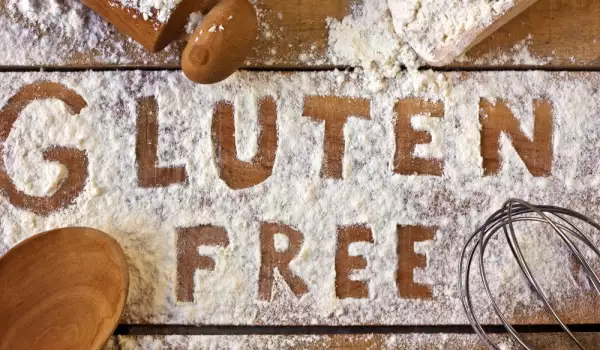
This type of flour is natural and does not contain gluten, which has a very pleasant taste and silky texture. It looks a little bit like wheat, but like we said, it's gluten-free flour, and it has a lot more protein than other flours. Oats contain a large amount of beta-glucans, which is a type of soluble fiber that causes the formation of a gel-like solution in the intestines, which gives a feeling of satiety. And here are a few more benefits of oat flour:
- Helps to reduce the level of bad cholesterol;
- Lowers the blood sugar level;
- Increases the feeling of satiety;
- Accelerates the growth of good bacteria in the gastrointestinal tract;
Oat flour contains a large amount of antioxidants.
5. Coconut flour
The next flour we will look at is coconut flour. Coconut flour is made from the fleshy part of coconuts, which is dried and then grinded. The resulting powder looks like flour and has a very pleasant aroma and taste. Coconut flour is much richer in protein than other types of flour. It also contains fiber and fat and is very low in carbohydrates. This type of flour also lacks gluten. Coconut flour helps a lot in the fight against extra weight because it contains triglycerides. Coconut flour can be used to make a variety of baked goods, but be aware that it has less density and thickeners or more eggs should be used to make your recipe.
6. Buckwheat flour

The next flour is buckwheat flour. Buckwheat itself is part of a group of foods that are also called pseudocereals. This is a type of seed that is used and eaten just like cereals, but does not grow like grass. As we know, buckwheat is also popular as a superfood because it contains a large amount of minerals and antioxidants. Buckwheat improves the blood sugar level in the body. It has a low glycemic index, which means that buckwheat flour can be safely consumed by people with type 2 diabetes. Buckwheat flour also greatly supports heart health. It contains substances such as rutin, magnesium, copper, fiber and proteins. Among all the cereals that belong to the group of pseudocereals, buckwheat is the one that is the best source of rutin, which is an antioxidant that has the property of reducing the risk of diseases of the cardiovascular system.
7. Rice flour
The next flour we will look at is rice flour. This type of flour is made by grinding white or brown rice and one of its biggest advantages over other flours is that it is very affordable. Rice flour is the most common substitute for wheat flour. It can be used to thicken various types of recipes that include chilled or frozen products due to the fact that it absorbs the liquid released from the products. Brown rice is a better source of fiber, vitamins and minerals such as calcium and zinc and has better nutritional value. Rice flour helps the normal function of the liver.
8. Banana flour
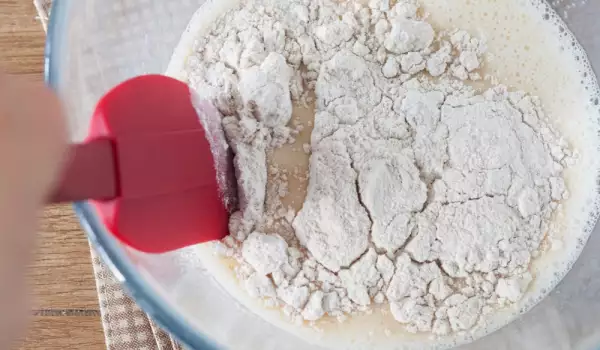
This type of flour is a bit more well-known, but on the other hand, it is a good solution for people who do not consume gluten. As the name suggests, this type of flour is made from bananas, mostly green bananas and tastes like raw banana. However, after undergoing heat treatment, this type of flour loses its taste and qualities. Banana flour is rich in prebiotic fiber, which is essential for good gut health. In addition, these fibers improve digestion, and in this type of flour they are in the largest quantities. This type of flour is a good source of potassium. Potassium helps keep our heart healthy. It also improves and increases strength in muscles and speeds up metabolism. Banana flour has a high amount of resistant starch, which helps diabetics improve their insulin sensitivity and maintain blood sugar levels. Banana flour can be used instead of wheat or white flour.
9. Tapioca flour
Like banana flour, tapioca flour contains a large amount of resistant starch. It is resistant to digestion and fulfills the role of fiber in the food system. This type of starch has many benefits for our health. It nourishes the good bacteria in our gut, thus preventing inflammation and reducing harmful bacteria. It also lowers blood sugar levels after a meal. Tapioca flour is generally used to thicken dishes.
10. Almond flour
This type of flour is made from grinded almonds. First, the almonds are blanched in boiling water to remove the skins. Then they are crushed and sifted into fine flour. You can also make almond flour at home. This type of flour has a lot of healthy fats and proteins, as well as vitamin E, which acts as an antioxidant. Prevents damage caused by free radicals. Almond flour also lowers blood sugar levels, lowers cholesterol, can be used as a substitute for wheat flour in cakes, pancakes and other desserts.
11. Flax flour
Flax flour is made by grinding the remaining product that is obtained after extracting the oil from the flaxseed. Flax flour contains very little carbohydrates, unlike other flours, which makes it extremely good for diets and weight loss. Flaxseed provides organisms with a very large amount of fiber and protein, which makes this flour suitable for athletes. This type of flour contains a large amount of omega-3 fatty acids. Flaxseed flour has the ability to double in volume, making it suitable for thickening soups and sauces. Also, people who exercise can add it to protein drinks or smoothies.
12. Carob flour
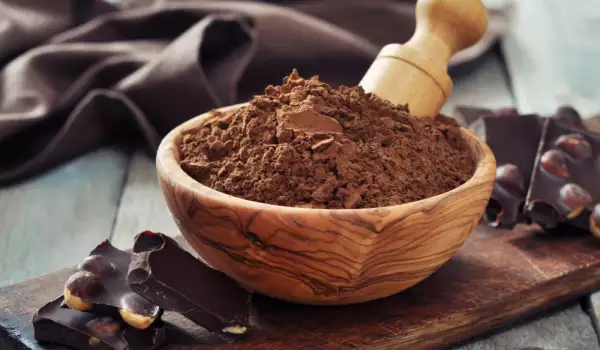
This type of flour is made from the pods of an evergreen tree that is common in the Mediterranean region. It is a natural substitute for cocoa. This type of flour is suitable if you decide to eat healthy. This type of flour has a large amount of vitamins such as A, B1, B2, D, calcium, magnesium, iron, phosphorus.
13. Apple flour
As we know, apples have a low glycemic index. They contain between 12 and 15% carbohydrates - pectin, cellulose, glucose, fructose. To make apple flour, well-ripened fruits are used, which are dried well in the sun and then grinded to a fine flour. This type of flour has a slightly sour taste and fruity aroma. It gives its characteristic brown color to dishes prepared with it. It can be used in combination with other types of healthy flours.
There are many more types of healthy flours in the world, but we have focused on some of the better known types of flours. However, before you decide to use any flour, first, be sure to consult a doctor.
See more benefits of chestnut flour and what delicious things you can prepare with corn flour.
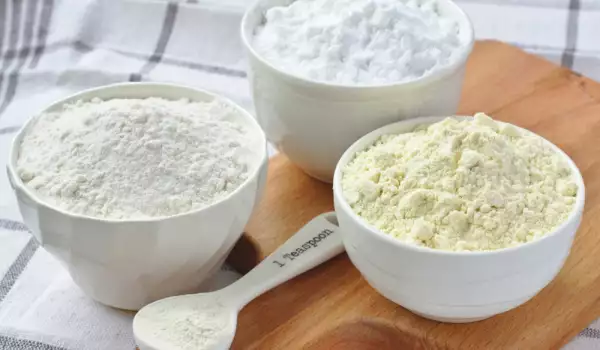

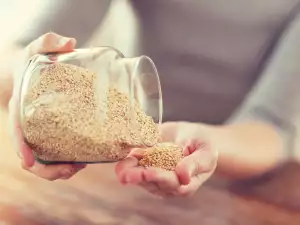
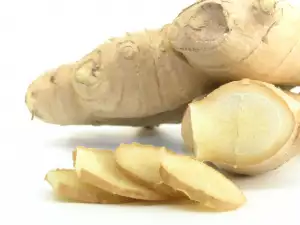



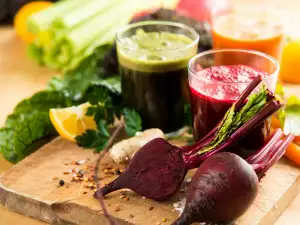


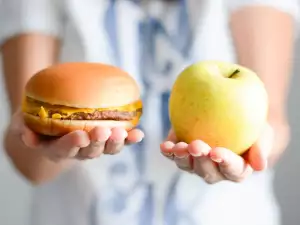
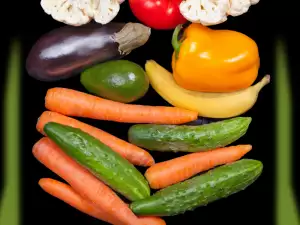








Comments